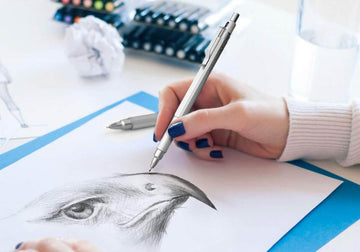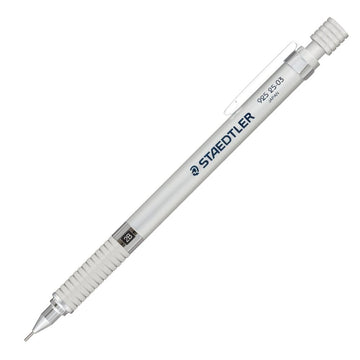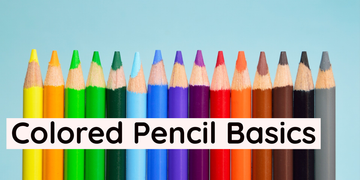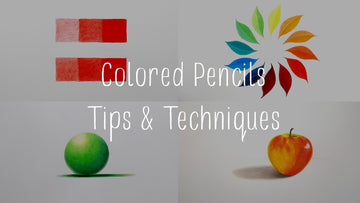
Whiteboard markers, also known as dry erase markers or non-permanent markers, have become an office and classroom essential for visual communication and collaboration. With the right whiteboard markers, you can easily jot down notes, brainstorm ideas, provide explanations, and more. But with so many options on the market, how do you choose the best whiteboard markers? This comprehensive guide will cover everything you need to know about these handy writing tools.
What Are Whiteboard Markers?
Whiteboard markers have a plastic or fiber barrel containing quick-drying, non-permanent ink. The ink uses pigments designed to adhere to glossy surfaces like whiteboards, glass, laminates, and metal without smearing. When used on these surfaces, the ink does not soak into the material but rests on top, allowing it to be easily wiped away without leaving a stain. This makes whiteboard markers ideal for temporarily writing information that needs to be frequently updated and erased.
The first whiteboard markers emerged in the late 1950s and early 1960s as companions to the new whiteboard surfaces that were gaining popularity. Over the decades, the ink formulas and nib designs have improved to create smoother, more consistent writing. While traditional markers had odors from solvent ingredients, new non-toxic low-odor and odorless options are now widely available.
Choosing the Best Whiteboard Markers
With a huge variety of whiteboard markers on the market, it can be tricky finding ones that write well without Ghosting or staining. Here are the key features to consider when shopping for whiteboard markers:
- Ink Type - Markers come filled with either oil-based or water-based ink. Oil-based ink contains solvents that allow it to adhere to surfaces and resist drying out. Water-based ink relies on glycols and is lower odor but can dry out faster.
- Nib Type - Felt nibs are the most common and provide smooth writing. Micro-fiber nibs hold more ink and last longer before fraying. Brush nibs create bolder lines. Chisel nibs have angled tips good for calligraphy.
- Ink Colors - Basic colors like black, blue, red, and green are ideal. Avoid light colors like yellow or pink that stain easily. Metallic, neon, or glitter ink looks fun but requires more cleaning.
- Barrel Size - slim markers around 8mm in diameter are easy to grip and control. Fatter barrels over 10mm hold more ink. Jumbo markers are easier to see at a distance.
- Low-Odor or Odorless - Look for non-toxic ink with little or no smell. Avoid solvent-heavy markers as the odor can be overwhelming.
- AP Certified - The safer, low-odor formula is certified by The Art & Creative Materials Institute.
- Erasability - Ink should wipe off easily without ghosting or staining the board surface. Check reviews to ensure good erasability.
- Durability - Markers with strong, securely-capped barrels prevent ink from drying out quickly. Sturdy nibs resist fraying or flattening with use.
- Price - Basic bulk markers can cost under $1 each while premium brands range from $2-$4 per marker. Buy quality rather than quantity if markers will get heavy use.
Top Whiteboard Marker Brands
With so many companies producing whiteboard markers, which brands rise above the rest? Here are some of the top performers based on quality, features, and value:
- Expo - The number one brand of whiteboard markers offers extensive options like erasable colors, scented ink, neon, and more. Known for smooth, consistent writing.
- Pentel - Japanese company making high-quality markers with great durability and ink flow. Their hybrid ink resists drying out. AP certified, low-odor.
- Sharpie - Known for permanent markers but also makes excellent whiteboard markers like the Scented Erasable Marker. Fun scents and colors.
- Quartet - Budget-friendly brand with basic markers in all colors. Also have magnetic holders, erasers, and whiteboard kits.
- Staedtler - German brand whose Lumocolor dry erase markers have long-lasting triangle nibs and dazzling ink colors.
- U Brands - Office supplier with the Ultra Clean line that are AP certified, low-odor, quick drying, and erase cleanly.
- Artline - Australian company popular for colorful Erasable Markers in sets for home and office. Also come in fun shapes.
Whiteboard Marker Tips, Tricks and Care
To get the most out of your whiteboard markers, follow these best practices:
- Store horizontally with caps secured to prevent ink from pooling on one side. Avoid extreme heat or freezing temps.
- Invert and gently shake markers before use to mix pigment if ink has settled.
- Test markers on a whiteboard first to ensure clean erasing before using for important writing.
- Use black and blue most often as these are easiest to read from a distance. Use other colors for emphasis.
- Write with light pressure so ink does not seep through and stain the board. Thick, dark lines are harder to fully erase.
- Erase writing regularly instead of allowing it to linger for weeks. Old ink stains worse. Use a whiteboard eraser or microfiber cloth.
- Avoid using dry erase markers on porous surfaces like unfinished wood and drywall where ink can soak in.
- Clean the entire whiteboard surface every few weeks using either whiteboard cleaning spray or a damp microfiber cloth with a small amount of isopropyl alcohol. This prevents ghosting.
- Replace markers that begin to dry out, split at the tip, or write inconsistently. Thinning ink gets harder to erase.
With the right whiteboard markers in hand, you can make your meetings, lessons, and brainstorming sessions more organized, efficient, and engaging. Use this guide to find the perfect markers to inspire great ideas and clearer communication in your office or classroom. The key is testing samples first to determine which glide the smoothest, erase the cleanest, and encourage you to pick them up and write!
What Are Whiteboard Markers?
Whiteboard markers have a plastic or fiber barrel containing quick-drying, non-permanent ink. The ink uses pigments designed to adhere to glossy surfaces like whiteboards, glass, laminates, and metal without smearing. When used on these surfaces, the ink does not soak into the material but rests on top, allowing it to be easily wiped away without leaving a stain. This makes whiteboard markers ideal for temporarily writing information that needs to be frequently updated and erased.
The first whiteboard markers emerged in the late 1950s and early 1960s as companions to the new whiteboard surfaces that were gaining popularity. Over the decades, the ink formulas and nib designs have improved to create smoother, more consistent writing. While traditional markers had odors from solvent ingredients, new non-toxic low-odor and odorless options are now widely available.
Choosing the Best Whiteboard Markers
With a huge variety of whiteboard markers on the market, it can be tricky finding ones that write well without Ghosting or staining. Here are the key features to consider when shopping for whiteboard markers:
- Ink Type - Markers come filled with either oil-based or water-based ink. Oil-based ink contains solvents that allow it to adhere to surfaces and resist drying out. Water-based ink relies on glycols and is lower odor but can dry out faster.
- Nib Type - Felt nibs are the most common and provide smooth writing. Micro-fiber nibs hold more ink and last longer before fraying. Brush nibs create bolder lines. Chisel nibs have angled tips good for calligraphy.
- Ink Colors - Basic colors like black, blue, red, and green are ideal. Avoid light colors like yellow or pink that stain easily. Metallic, neon, or glitter ink looks fun but requires more cleaning.
- Barrel Size - slim markers around 8mm in diameter are easy to grip and control. Fatter barrels over 10mm hold more ink. Jumbo markers are easier to see at a distance.
- Low-Odor or Odorless - Look for non-toxic ink with little or no smell. Avoid solvent-heavy markers as the odor can be overwhelming.
- AP Certified - The safer, low-odor formula is certified by The Art & Creative Materials Institute.
- Erasability - Ink should wipe off easily without ghosting or staining the board surface. Check reviews to ensure good erasability.
- Durability - Markers with strong, securely-capped barrels prevent ink from drying out quickly. Sturdy nibs resist fraying or flattening with use.
- Price - Basic bulk markers can cost under $1 each while premium brands range from $2-$4 per marker. Buy quality rather than quantity if markers will get heavy use.
Top Whiteboard Marker Brands
With so many companies producing whiteboard markers, which brands rise above the rest? Here are some of the top performers based on quality, features, and value:
- Expo - The number one brand of whiteboard markers offers extensive options like erasable colors, scented ink, neon, and more. Known for smooth, consistent writing.
- Pentel - Japanese company making high-quality markers with great durability and ink flow. Their hybrid ink resists drying out. AP certified, low-odor.
- Sharpie - Known for permanent markers but also makes excellent whiteboard markers like the Scented Erasable Marker. Fun scents and colors.
- Quartet - Budget-friendly brand with basic markers in all colors. Also have magnetic holders, erasers, and whiteboard kits.
- Staedtler - German brand whose Lumocolor dry erase markers have long-lasting triangle nibs and dazzling ink colors.
- U Brands - Office supplier with the Ultra Clean line that are AP certified, low-odor, quick drying, and erase cleanly.
- Artline - Australian company popular for colorful Erasable Markers in sets for home and office. Also come in fun shapes.
Whiteboard Marker Tips, Tricks and Care
To get the most out of your whiteboard markers, follow these best practices:
- Store horizontally with caps secured to prevent ink from pooling on one side. Avoid extreme heat or freezing temps.
- Invert and gently shake markers before use to mix pigment if ink has settled.
- Test markers on a whiteboard first to ensure clean erasing before using for important writing.
- Use black and blue most often as these are easiest to read from a distance. Use other colors for emphasis.
- Write with light pressure so ink does not seep through and stain the board. Thick, dark lines are harder to fully erase.
- Erase writing regularly instead of allowing it to linger for weeks. Old ink stains worse. Use a whiteboard eraser or microfiber cloth.
- Avoid using dry erase markers on porous surfaces like unfinished wood and drywall where ink can soak in.
- Clean the entire whiteboard surface every few weeks using either whiteboard cleaning spray or a damp microfiber cloth with a small amount of isopropyl alcohol. This prevents ghosting.
- Replace markers that begin to dry out, split at the tip, or write inconsistently. Thinning ink gets harder to erase.
With the right whiteboard markers in hand, you can make your meetings, lessons, and brainstorming sessions more organized, efficient, and engaging. Use this guide to find the perfect markers to inspire great ideas and clearer communication in your office or classroom. The key is testing samples first to determine which glide the smoothest, erase the cleanest, and encourage you to pick them up and write!




